Idyllically situated in the Los Glaciares National Park in Argentina’s Santa Cruz province, the village of El Chaltén is known as Argentina's trekking capital. It is a popular haven for outdoor enthusiasts with hiking opportunities abound for both advanced and beginner trekkers. Just an hour’s walk can lead you straight to the treasures of Los Glaciares National Park, which range from great glaciers to towering rocky summits and rolling forests. Founded in 1985, the town got its name from the Tehuelche word meaning ‘mountain that smokes’, because of the clouds that persistently sit atop the great peaks. The Perito Moreno Glacier and the Laguna de Los Tres, a picture-postcard mountain lake with the snowy backdrop of Fitz Roy peak, are the most visited sites.



Situated deep in Patagonia’s snow-capped vistas, on the southern shore of Lake Argentino, El Calafate has become a key stopover for travellers headed to nearby Los Glaciares National Park. This icy wonderland is best known as the home of spectacular Perito Moreno glacier – a massive, shifting ice cap composed of dozens of smaller glaciers. Take a glacier tour, a helicopter ride, or a 4x4 excursion; hike and boat to your heart’s content; or visit one of the traditional ‘ranchos’ (estancias) to learn more about local culture (another great spot for this is the Centro de Interpretacíon Historico). A wonderful selection of restaurants and boutiques adds appeal; make sure to try the ‘alfajores’ cookies. Drink vodka, watch a movie, and learn all about ice at the impressive Glaciarium.



This former fishing port, situated in the Patagonian region of southern Chile, has blossomed into a tourist haven. This trendy town offers boutique beers, wine tastings and famous brand shops catering to the international set, but it has lost nothing of its relaxed pace in the process. From Puerto Natales, visitors can take a trip to the Parque Nacional Torres del Paine with its impressive rock formations and ice field (the third largest in the world); travel by ferry through the Chilean fjords; or visit the prehistoric caves at the Cueva del Milodón Natural Monument (where the remains of the giant ground sloth were found in 1895).



Known for its spectacular beauty, Torres Del Paine National Park is a rich biosphere reserve in Chile’s Patagonian region. The park stretches over 242 000 hectares of magnificent landscape, featuring snow-capped mountains, ancient glaciers, cascading waterfalls, golden grasslands and several lakes that attract a variety of water birds. Three iconic granite pillars of the Torres del Paine tower over the landscape of emerald forests and the impossibly blue lake. Travellers may be able to spot the endemic guanaco llama, Andean condor, foxes, cougars, guanacos, Chilean Huemul, and around 15 birds of prey. Neighbouring Bernardo O'Higgins National Park to the west and the Los Glaciares National Park to the north, Torres Del Paine is the perfect place for extended trips in the Chilean wild.
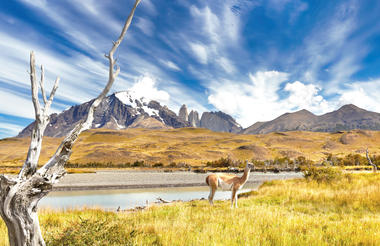
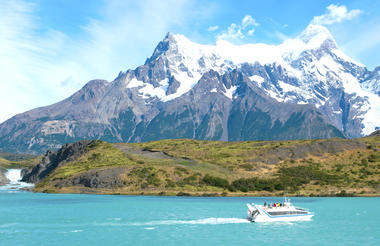
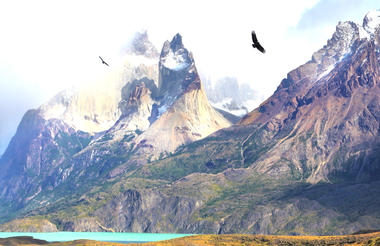
As previously described
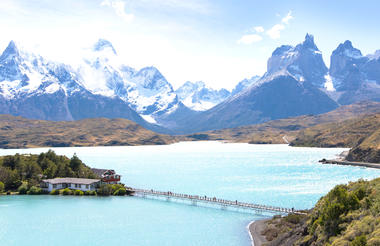
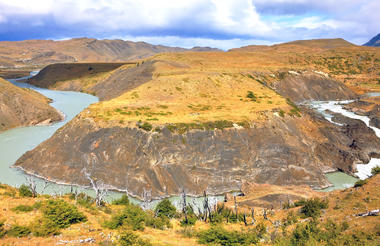
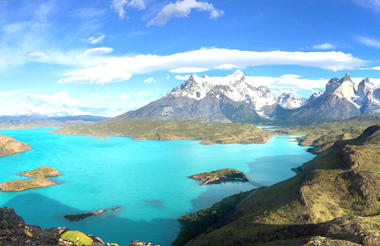
As previously described
As previously described
As previously described



Set on the shores of the vast Llanquihue Lake in Chile, the picturesque Puerto Varas is known for its stunning natural scenery, traditional German-style architecture and excellent range of accommodation. The town offers incredible views of the snow-capped but active Osorno and Calbuco Volcanoes and magnificent waterfalls of the lake. The Alerce Andino National Park, in the Andes Mountains to the south, provides another world to explore nearby, featuring lush green forests perfect for hiking and turquoise blue waters ideal for canoeing. Many German families settled in this southern Chilean town at the end of the 19th century and their influences are still evident in the local architecture, cuisine and traditions today. Puerto Varas features an excellent range of guesthouses, hotels, and restaurants serving traditional German food.



A bustling seaside city in southern Chile, Puerto Montt has humble beginnings as a German settlement in the 1850s. Today, it is the thriving capital of the Lakes District and the region's key port, transit and business hub. Begin by exploring the popular Angelmó harbour market to sample local gastronomy in the beckoning row of quaint, two-storey restaurants on the picturesque port and the streetside stalls selling smoked mussels, cochayuyo – an edible sea plant – and assorted trinkets. Other places of interest include the Iglesia Cathedral – the oldest building in the city – on the Plaza de Armas and the Casa del Arte Diego Rivera, where local artists, sculptors and photographers are showcased. From the harbour, it's a short boat ride across to Tenglo Island for views of the snow-capped volcanic peaks.








